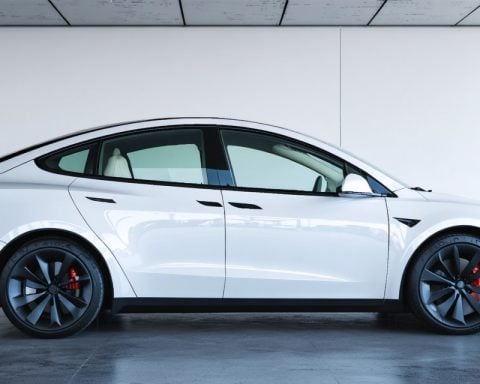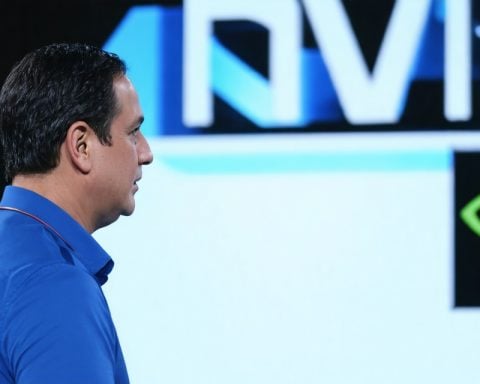- Shein’s rise leveraged social media and data analytics, capitalizing on the de minimis tax loophole for ultra-cheap fashion.
- Potential changes in government policies targeting the tax loophole threaten Shein’s competitive pricing.
- Ethical concerns, including allegations of forced labor ties to Xinjiang, cloud Shein’s expansion and IPO ambitions.
- The UK faces a dilemma between potential financial gains from Shein and upholding regulatory standards.
- Intensifying scrutiny from investors, environmentalists, and consumers highlights the fast fashion industry’s sustainability challenges.
- Shein’s situation underscores the fashion industry’s need to balance consumer demand with ethical and environmental accountability.
- The outcome of Shein’s challenges could significantly influence the industry’s shift toward sustainability.
The whirlwind success of Shein, once the darling of fast fashion, now teeters on the verge of unraveling. From humble beginnings as a seller of bridal wear, the company surged to dizzying heights by harnessing the power of social media and razor-sharp data analytics. But the tide appears to be turning for this fashion juggernaut.
Shein’s strategy was brilliant in its simplicity—offering ultra-cheap, trendy clothes courtesy of a deftly exploited tax loophole. It circumvented hefty tariffs on shipments to the West using the “de minimis” rule, which allows small packages to sail across borders sans duties. Consumers from the U.S. to the U.K. reveled in Shein’s offerings, but governmental shifts could spell catastrophe for this business model. As voices grow louder against this loophole, significant changes loom that could inflate prices and deflate Shein’s competitive edge.
Meanwhile, ethical clouds gather above Shein, partly due to alleged links to forced labor in Xinjiang. The proposed London float, originally promising to be a monumental stock exchange coup, now dances precariously on the seesaw of regulatory and ethical scrutiny. The UK government finds itself in a quandary: embrace the financial windfall or safeguard its regulatory integrity.
Shein’s predicament, underscored by high-profile investor skepticism and environmental backlash over fast fashion’s unsustainable nature, reveals a broader truth. The fashion world dangles on a tightrope between unbridled consumerism and burgeoning ethical, environmental accountability. As Shein navigates these turbulent seas, a recalibration seems indispensable—not just for securing its future, but for the very fabric of fast fashion.
In the end, Shein’s fate could echo far beyond its own fortunes, heralding a pivotal moment in the global fashion industry’s journey toward more sustainable practices.
Is Shein’s Fast Fashion Empire on the Verge of Collapse?
How-To Steps & Life Hacks
How to Shop Ethically in the Fast Fashion World
1. Research Brands: Before purchasing, investigate brand practices on their websites or through organizations like Good On You.
2. Second-Hand Shopping: Utilize apps and stores that specialize in second-hand fashion to reduce the environmental footprint.
3. Buy Less, Choose Well: Opt for quality over quantity, selecting pieces that are timeless and versatile.
4. Support Local and Sustainable Brands: Look for brands that prioritize ethical practices and sustainability.
Real-World Use Cases
Shein’s initial success predominantly relied on:
– Micro-Influencers and Social Media: Leveraging platforms like TikTok and Instagram, Shein uses micro-influencers to quickly disseminate new fashion lines to targeted demographics.
– Data Analytics for Trend Forecasting: By adeptly employing data analytics, Shein has been able to identify and forecast fashion trends ahead of its competitors.
Market Forecasts & Industry Trends
The fast fashion industry’s trajectory suggests a shift towards sustainability. According to a report by McKinsey & Company, the segment is expected to face tighter regulations and increased consumer awareness of ethical manufacturing, prompting brands to pivot towards eco-friendly materials and transparent operations.
Reviews & Comparisons
While Shein offers budget-friendly prices, competitors like Zara and H&M have started to incorporate sustainable lines at slightly higher price points. Reviews note Zara’s faster shipping and H&M’s recycling programs as major differentiators.
Controversies & Limitations
The main controversies around Shein stem from:
– Ethical Concerns: Allegations of ties to forced labor in Xinjiang, prompting regulatory scrutiny and public outcry.
– Environmental Impact: Fast fashion’s unsustainable model is increasingly criticized for contributing to waste and pollution.
Features, Specs & Pricing
– Product Range: Shein boasts a vast array of products, from clothing to home goods, all priced competitively lower than many fast fashion rivals.
– Pricing: Shein capitalizes on low pricing by reducing manufacturing costs and utilizing the de minimis rule for tariff avoidance.
Security & Sustainability
Although Shein has made strides, the company’s sustainability efforts are often outpaced by its volume-based sales model that encourages disposable fashion.
Insights & Predictions
Experts predict that Shein will need to adapt to stricter regulations and shifting consumer expectations by enhancing its transparency and embracing more sustainable production methods to maintain relevance.
Pros & Cons Overview
Pros
– Ultra-affordable pricing
– Rapid trend response through data-driven insights
– Extensive variety
Cons
– Ethical and environmental concerns
– Potential regulatory changes affecting pricing strategy
– Quality consistency issues
Actionable Recommendations
– For Consumers: Prioritize purchasing fewer, higher-quality items to contribute to reduced fashion turnover and waste.
– For Shein: Focus on improving supply chain transparency and invest in sustainable practices to align with evolving market trends.
For more information, you can visit the Shein website and explore alternatives such as Zara and H&M.
By embracing sustainable practices and ethical transparency, fast fashion can realign with modern consumer values, ensuring longevity and industry resilience.











